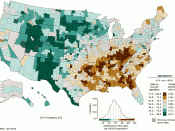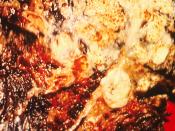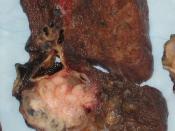In cancer, one particular type of body cell begins to grow and multiply abnormally, eventually forming a mass of renegade cells that doctors call a malignancy or a malignant tumor. Under a microscope, malignant cancer cells look different from their normal neighbor cells, and they act differently, too. They are aggressive and invasive; they don't respect the body's established boundaries between cells and tissues. Many of these malignant cells manufacture destructive chemicals called proteases that allow them to invade neighboring body areas. Others spread into the bloodstream and lymph vessels, and they establish secondary sites of cancer growth in organs far from the site of the primary tumor. As they grow, cancer cells may also produce abnormal hormones and other types of chemicals that affect the functions of the entire body. Some cancer cells can even modify their internal chemical reactions, allowing them to escape destruction by the body's immune system or to counter the effects of anti-cancer medications.
Cancer occurs when a cancerous tumor originates from a single abnormal cell that multiplies out of control. The original cancer cell reproduces itself through a process called mitosis to form two cancer cells. These two cancer cells divide to form four, then eight, then 16, and so on. In the end, it usually takes a mass of at least 100 million cancer cells to form a detectable malignant tumor.
Many causes of Cancer are:
Chemicals
The US Environmental Protection Agency has formulated a long list of chemical carcinogens. Some of these - including tar, polynuclear aromatic hydrocarbons, phenol, nitrosamines, and vinyl chloride - are components of cigarette smoke and cause 85% of all lung cancer deaths. Other chemical carcinogens may not be as well known. For example, the ethyl alcohol in alcoholic beverages has been linked to esophageal cancer,



Nice...
A good essay. But I wish there was a little more to it. "What cancer is" and "how it's caused" is good, but I was left wanting more.
My Grandfather died of pancreatic cancer, so this was kind of hard to read. But a good essay nonetheless. Bravo!
6 out of 6 people found this comment useful.